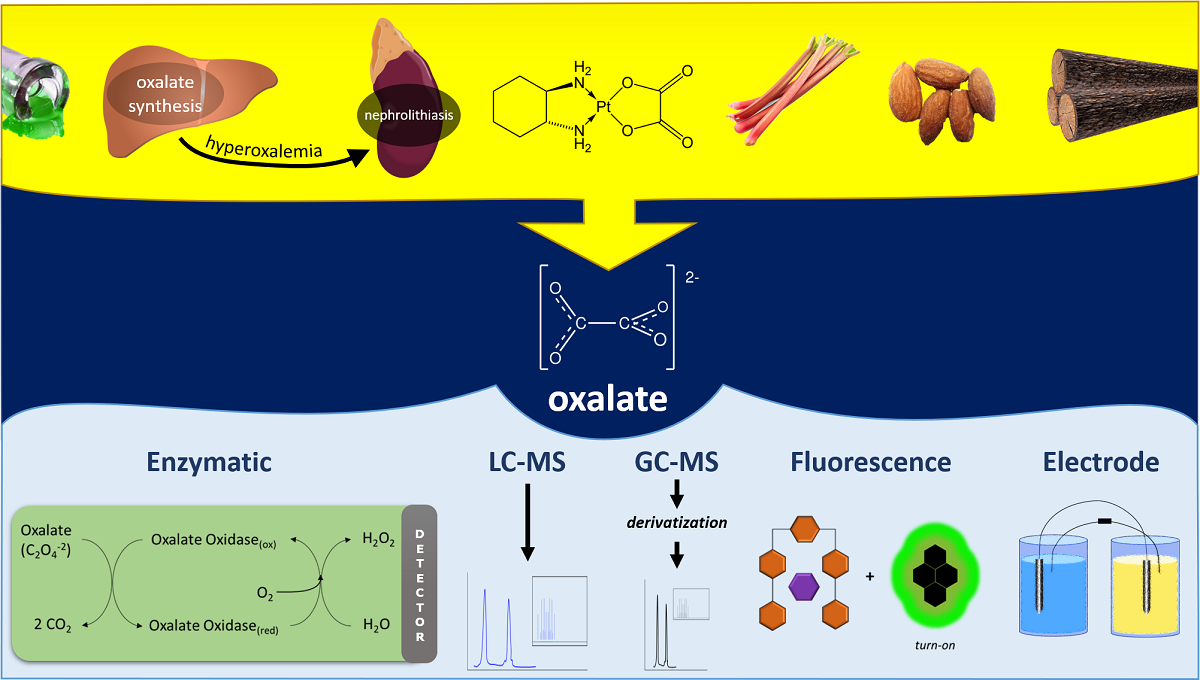Oxalate is a divalent organic anion that has implications across many biological and commercial processes. It is derived from plant sources, such as spinach, rhubarb, tea, cacao, nuts, and beans, and therefore is commonly found in raw or processed food products. Oxalate can also be made endogenously by humans and other mammals as a byproduct of hepatic enzymatic reactions. It is theorized that oxalate is useful for plants to store calcium and protect against herbivory. Clinically, oxalate is best known to be a major component of kidney stones, which commonly contain calcium oxalate crystals. Oxalate can induce an inflammatory response that decreases the immune system’s ability to remove renal crystals. When formulated with platinum as oxaliplatin (an anticancer drug), oxalate has been proposed to cause neurotoxicity and nerve pain. There are many sectors of industry that are hampered by oxalate, and some that depend on it. For example, calcium oxalate is troublesome in the pulp industry and the alumina industry as it deposits on machinery. On the other hand, oxalate is a common active component of rust removal and cleaning products. Due to its ubiquity, there is interest in developing efficient methods to quantify oxalate. Over the past four decades several diverse methods have been reported. These approaches include electrode-based detection, liquid chromatography or gas chromatography coupled with mass spectrometry, enzymatic degradation of oxalate with oxalate oxidase and detection of hydrogen peroxide as a product, and indicator displacement-based methods employing fluorescent or UV light-absorbing compounds. It has become clear that no single method will work best for every purpose. This review describes the strengths and limitations of each method, and may serve as a reference for investigators to decide which approach is most suitable for their work.

